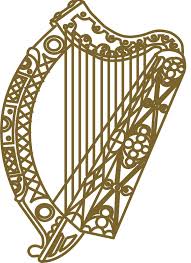
by John McCarthy Consulting Ltd. | Jun 7, 2017 | News
Statutory Instrument SI 246 of 2017 has been signed into law by the Minister for Jobs, Enterprise and Innovation, Mary Mitchell O’Connor. This instrument means that the Companies (Accounting) Act, 2017 will come into effect on 9 June 2017.
With respect to financial statements and some other reports, the Act will apply to financial periods beginning on or after 1 January 2017. Section 14 of the Act allows for early adoption of certain sections (set out in Section 14), mainly to do with financial statements which may be early adopted for financial years beginning as early as 1 January 2015.
The Statutory instrument is available here: https://www.djei.ie/en/Legislation/SI-No-246-of-2017.html
The Act is available here http://www.irishstatutebook.ie/eli/2017/act/9/enacted/en/pdf
To hear more on this topic, please click here to see our upcoming courses in November 2017

by John McCarthy Consulting Ltd. | May 23, 2017 | News
In this blog, we look at the proposed changes in FRED 67 on financial instruments, intangible assets and small entity directors’ loans.
These changes were published in FRED 67 (by the Financial Reporting Council in March 2017) which the FRC propose to make effective from 1 January 2019.
For more on FRS 102, the proposed changes in FRED 67, and other topics come to our upcoming CPD courses in the Talbot Hotel Stillorgan County Dublin.
Financial instruments
Section 11 of FRS 102 ‘Basic Financial Instruments’, sets out a detailed list of rules for classifying debt instruments as ‘basic’.
If any of these are breached, the instrument is complex (in the language of the standard ‘non-basic’) and must be accounted for under Section 12, Other Financial Instruments Issues, at fair value. These rules do not change in the latest proposals, but the exposure draft does add a new principles-based definition of a debt instrument.
The idea is that more instruments should meet the ‘basic’ definition in future.
Even if an instrument breaches one or more of the rules, it could still be ‘basic’ as long as it falls within that definition.
The idea is that more instruments should meet the ‘basic’ definition in future and ‘non-basic’ instruments will end up being, typically, those where there is some exposure to something unusual or unrelated. It also means, though, that a greater degree of judgement will be needed when assessing financial instrument classification.
Intangible assets
Intangible assets in a business combination are currently separated out from goodwill if they either arise from legal or contractual rights, or if they are separable. This was a change from old UK GAAP, which required both of these criteria to be met. In FRED 67, the FRC is reverting to the old GAAP approach, although it does allow an alternative accounting policy choice, where all intangibles can be separated out as long as they are reliably measurable and have a probable chance of future economic benefits.
This seems to offer a reasonable amount of flexibility, but it is an ‘all or nothing’ approach: either all intangibles are split out, all the time, an approach more similar to IFRS, or they are split out relatively rarely, as under old UK GAAP. If this amendment is approved, the decision as to which policy to apply will depend not only on the accounting but also other areas, especially the tax implications.
Small entity directors’ loans
The accounting required for intragroup and other related party loans has been a source of difficulty since FRS 102 was first issued.
Currently, where a loan is made on an non-market basis, it is necessary to identify an equivalent market interest rate and use that to discount the cash flows to present value. However, the FRC received feedback raising concerns about how practical it is to obtain a market rate, particularly for small entities that would not otherwise be able to access funding. There is also a question as to how relevant the accounting treatment is, especially for owner-managed businesses.
The exposure draft proposes that small entities are not required to find a market rate of interest where they have borrowings received from director shareholders or close family of the director shareholders i.e. credit loans. Instead they can just use the transaction price. This exemption only extends to directors who are ‘natural persons’, so loans with corporate directors would not qualify for the exemption. It is our understanding that this relief will also be allowed to ‘small’ entities that choose not to use Section 1A of FRS 102, as long as they qualify as ‘small’.
Any other related party loans – intragroup loans and so on – still need to be accounted for at present value using the market rate. Small entities will still need to disclose these transactions though, as non-market transactions with directors and their family are caught by the related party disclosure requirements in Section 1A.
Reacting to early feedback received the Financial Reporting Council have already published an interim relief measure for directors from 8 May 2017. The measure announced applies to credit loans only. The FRC has clarified that the interim measure will not apply to loans from small companies to their directors/shareholders i.e. debit loans.
Readers may want to send feedback to the FRC, before the deadline of 30 June 2017, asking for this relief to be extended to debit loans i.e. loans from the company to director/shareholders, as they are just as common as debit loans.
Retrospective restatement
Any change in accounting policy resulting from a change in the requirements of a Financial Reporting Standard (FRS) needs to be accounted for in accordance with the transitional provisions, if any, specified in that amendment. Where there are no transitional provisions, any changes in accounting policy need to be applied fully retrospectively (i.e. from the beginning of the comparative period), to the extent practicable.
FRED 67 contains a couple of transitional provisions relating to intangible assets previously separated out in a business combination and investment property, which is let out to another group entity. The remaining changes seem to need to be applied fully retrospectively. The FRC may amend this when it issues the final set of amendments, but this is not certain.
Future developments
The FRC aims to issue the amendments in final form by late 2017. The plan is that the amendments will apply for periods beginning on or after 1 January 2019, but early adoption will be available once they are finalised, so if the simplifications suit, it could be possible to adopt them for 2017 year ends. If any amendments are adopted early, all amendments must be adopted early.
In FRED 67, the focus has clearly been on making FRS 102 more straightforward and easier to apply in practice. The next stage of the triennial review will focus more on alignment with IFRS and particularly on implementing some of the big changes that are currently affecting IFRS adopters, namely, revenue recognition, financial instruments and leases.
Whether and how these areas are applied to FRS 102 remains to be seen, but it will no doubt be a substantial task for the FRC. At least this second stage will not be effective until 2022, though, so there is plenty of time to consult on and consider these changes.
Closing date for feedback
FRED 67 is open for comment until 30 June 2017. Comments on the proposals should be sent to ukfrs@frc.org.uk.
Exposure draft FRED 67
For a copy of the 142-page exposure draft click here FRED 67, Draft amendments to FRS 102 Financial Reporting Standard applicable in the UK and Republic of Ireland, Triennial review 2017.
For more on FRS 102, the proposed changes in FRED 67, and other topics come to our upcoming CPD courses in the Talbot Hotel Stillorgan County Dublin.

by John McCarthy Consulting Ltd. | May 23, 2017 | News
New guidance has been published in the UK on how and when auditors should report matters to charity regulators. This is an important change in the relationship between auditors and the charities regulator – covering matters that would not have been explicitly reported on previously.
The guidance applies when reporting to the Charity Commission for Northern Ireland and covers both auditors and independent examiners. It also deals with charities regulated across the UK. It applies when an audit report is signed off on/after 1 May 2017 and covers a range of matters outlined below.
It is perhaps only a matter of time before these areas are also covered by regulatory reporting requirements in the Republic of Ireland.
There are nine key areas that must be reported:
- Where there are concerns that conflicts of interest and related party transactions have not been properly managed or declared;
- Where an audit report is modified, or contains an emphasis of matter paragraph (such as for going concern);
- Failure(s) of internal controls, including matters of governance, that resulted in, or could result in, loss or risk to, charitable funds or assets;
- Matters suggesting dishonesty or fraud involving loss, or risk to, charitable funds or assets;
- Evidence that the charity’s activities put its beneficiaries at risk of abuse or mistreatment;
- Breaches of legislative requirements, including charitable funds being misapplied;
- Evidence of a deliberate or significant breach of an order or direction made by a charity regulator;
- Knowledge or suspicion that the charity, trustees, employees or assets have been used to support terrorism; and
- Knowledge or suspicion that charitable funds have been used for money laundering.
For more on this and other topics affecting charities in Ireland, come to our next CPD event on 30 November 2017.
Booking and further details are available here
Other courses are available at Ticket Tailor here

by John McCarthy Consulting Ltd. | May 22, 2017 | News
Commencement date
The Companies (Accounting) Act, 2017 was signed into law by the President on Wednesday 17 May 2017 as No 9 of 2017, but as of today Tuesday 23 May 2017, is not yet published as an Act on the Irish Statute Book website – operated by the Attorney General at http://www.irishstatutebook.ie/eli/acts.html. During the Dáil debates on the Bill it was mentioned that the commencement of certain sections of the legislation would be back-dated to periods commencing 1 January 2016 and 1 January 2015 in some cases.
Periods commencing 1 January 2015 is of little use to companies at this stage as most, if not all, have filed their financial statements for the year ended 31 December 2015. Hopefully it will be back-dated at least to 1 January 2016 to allow companies that qualify avail of the new audit exemption and ‘small’ company thresholds as well as the new Micro Entities regime (essentially operated by the use of the FRS 105 accounting standard).
Care is needed when availing of the Micro Entities regime as it cannot be used by:
- Charities;
- Regulated entities such as financial institutions and insurance intermediaries and
- Entities that prepare consolidated financial statements (see page 100 of FRS 105).
Additional care is also required as financial statements prepared under FRS 105 are deemed to give a true and fair view. Therefore, adding any additional notes beyond what’s required in the standard may be a risky approach and could jeopardise the true and fair concept.
In recommending FRS 105 to clients, accountants should caution them that while directors’ salaries no longer need disclosed under the Micro Entities regime, the financial statements need few notes (except in certain limited circumstances)! It may take some convincing for third parties like lending institutions and suppliers, upon which the business depends for credit, that FRS 105 is a credible regime, if one is looking for credit.
FRS 102 (Section 1A) may be a more suitable standard to apply for ‘small’ entities as it comes with a ready-made suite of notes and accounting policies that explain the financial statements better and most critically of all, add significant credibility to the accounts.
Name of new legislation
Section 1 of the new Act states: ‘This Act may be cited as the Companies (Accounting) Act, 2017’. Presumably together with the earlier legislation that it partly amends, both pieces of company law may be cited as the ‘Companies Acts 2014 to 2017’.
For more on this and other courses see our next company law event on 29 November 2017 here
Other courses are available at Ticket Tailor here

by John McCarthy Consulting Ltd. | May 10, 2017 | News
FRS 102 – Interim relief for Treatment of Directors’ Loans
by John McCarthy
On Monday 8 May 2017, the Financial Reporting Council (FRC) issued a press release on director’s loan reporting for small companies. It has announced that it is withdrawing the requirement to find a market rate of interest where a loan is made on an off-market basis under Irish GAAP. This is an unusual move for the FRC, as it is making the change without consultation, presumably on the basis of demand from the profession.
In March, the FRC published Financial Reporting Exposure Draft 67 (FRED 67) which set out changes to FRS 102 as a result of the first triennial review, outlining potential changes to be made to director’s loans accounting. We will cover the changes in this FRED in a future blog.
The FRC has now responded to calls to create an interim optional exemption for small companies, allowing them to measure a basic financial liability that is a director’s loan initially at transaction price.
The FRC Press Release states: ‘A small entity, as an exception to paragraph 11.13, may measure a basic financial liability that is a loan from a director who is a natural person and a shareholder in the small entity (or a close member of the family of that person) initially at transaction price. Subsequently, for the same financial liability, a small entity is also exempt from the final sentence of paragraph 11.14.’
The measure announced applies to credit loans. The FRC has clarified that the interim measure will not apply to loans from small companies to their directors/shareholders i.e. debit loans.
As it is an interim measure, the amendment will be deleted as part of the finalisation of FRED 67, expected around January 2018. It will then be replaced with permanent requirements based on the proposal in FRED 67 after the outcome of the consultation process. The changes in FRED 67 are not expected to come into effect until periods commencing 1 January 2019, but early adoption may be allowed.
The FRC said: ‘Whilst it is usual for the FRC to consult formally on amendments to an extant standard, the FRC has concluded that this is not essential in this case as the amendment is only an interim measure, it merely defers for many entities the first-time application of an accounting policy of measuring such loans initially at present value and the permanent removal of this policy is already subject to an on going consultation.’
‘We have also explained that, in the context of owner-managed businesses in particular, many question the value of the notional interest charge to profit or loss in such circumstances, especially where the notes to the accounts adequately disclose the nature and terms of outstanding directors’ loans.’
For more on FRS 102 and the proposed changes in FRED 67 come to our next CPD course at the Talbot Hotel Stillorgan County Dublin on Monday 27 November. For more details and online bookings see here.
Other courses are also available at Ticket Tailor here.

by John McCarthy Consulting Ltd. | Apr 11, 2017 | News
Top Tips for Preparing for an Audit Quality Review
– Over reliance on financial statements presentation software without verifying the disclosures are correct in accordance with the Companies Act 2014 and FRS 102. Chartered Accountants Ireland has some very useful toolkits to help check the financial statements disclosure references. For more details see https://www.charteredaccountants.ie/en/Site/Shop/Publications/Practice-Toolkits/.
– Note on the audit file any critical judgements or assessments made as others reading the file may not come to the same conclusion. These notes should be written clearly to justify the audit treatment adopted.
– Answering “Y”, ‘N’, or ‘N/A’ to questions in an audit programme or checklist must have some supporting corroborative evidence of why this is the correct answer. Just because it was the right answer last year, does not always make it the right answer this year (even allowing for a change in accounting standards).
– Related parties and beneficial owners – the audit team need well briefed in advance of the audit commencing. If someone can influence the company, irrespective of whether they have entered into any transactions with the party or there is any required disclosure, the audit team must be briefed about them e.g. premises rented from a related party landlord at a zero-rental charge, is still a related party ‘transaction’ and disclosable if the market rent that would have been charged by a third party, would have been material. The audit team, including juniors need properly briefed, if they are to flag up otherwise undisclosed related party transactions.
– Often, a free quick search on the CRO website, will highlight other directorships previously unreported. Directors’ spouses, parents, children and business interests can be incorrectly omitted from the relevant financial statements disclosures.
– With the new requirement on Irish corporates from 15 November, 2016, to keep a register of ‘beneficial owners’ for anti-money laundering legislative purposes, auditors will need to check that the ultimate beneficial owners, as disclosed on that register, correspond to those disclosed in the company’s financial statements.
– Going concern evidence is another frequent bugbear on audit files. If the company is planning to stop trading in the next year, it is not a going concern. It is therefore important to ascertain and document the future business plans of the directors and shareholders, (e.g. to inject more working capital or file for liquidation). It is not enough to say that there is a positive balance sheet. If the sole director/employee, is planning to retire, then the business may not be a going concern and the financial statements need to reflect this. As a result, the financial statements may need prepared on a ‘break-up’ basis.
– Always follow up bank enquiry responses and get them back before the audit is signed off. Watch for related party information contained in the replies such as directors’ personal guarantees and life assurance policies given as security for borrowings.
– Note the difference between ‘immaterial errors’ and ‘trivial errors’. Immaterial errors need to be noted down for consideration while, trivial ones don’t. See Practice Note 26 (PN26) Guidance on Smaller Entity Audit Documentation.
– Where stock is material, the auditor is not absolved from stock take attendance even if there are expert stocktakes present. Expert stocktakers tend to be more prevalent in supermarket and pharmacy audits. Their presence is a useful addition to the audit evidence available to the external auditors, but the statutory auditor is still responsible for attending the stocktake (PN25 Attendance at Stocktaking and ISA (Ireland) 501 Audit Evidence – Specific Considerations for Selected Items) and assessing the work of the expert stocktakers under ISA (Ireland) 620 Using the Work of an Auditor’s Expert.
– FRS 102 has lots of useful exemptions with which to become well acquainted: Section 35.10 which can only be used once on transition, paragraph 1.8 for subsidiary company accounts, and Section 33.1a for related party transactions in wholly owned groups.
– Once FRS 102.1A is triggered for ‘small’ companies, upon the signing into law of the delayed Companies (Accounting) Bill, 2016, it will open up many other useful exemptions for certain ‘small; entities including the exemption from presenting the statement of cash flows.
– FRS 101 has some useful disclosure exemptions for Irish/UK subsidiary companies preparing IFRS financial statements and already includes the exemption from presenting the statement of cash flows.
– Audit report signatures must use the label ‘Statutory Auditor’ or ‘Statutory Audit Firm’. The term ‘Registered Auditor’ no longer exists under company law.
To read more details about how to prepare for an Audit Quality Review continue reading below.
This article attempts to give some tips on the ‘good’ and the ‘not so good’ aspects of audit quality review visits to small and medium practices. I hope to highlight some of the more common issues that can arise and how to ensure that your firm does not fall into the ‘not so good’ category.
A Quality Review visit from the Professional Standards Department (formerly CARB) of the Institute, assesses the firm’s compliance with the Audit Regulations 2017, Anti-Money Laundering, Insolvency and Investment Business Regulations (September 2016) and compliance with the Professional Practice Regulations (amended October 2015) (which include the Clients’ Money requirements and Continuing Professional Development Regulations). This article does not deal with insolvency and investment business reviews.
During the review the preparation of statutory financial statements and compliance with FRS 102 and the Companies Act, 2014 disclosure requirements will also be assessed.
The Professional Standards Department also verifies compliance with the Code of Ethics (January 2014) and the IAASA Ethical Standard for Auditors (Ireland) 2016 (effective from 17 June 2016) and is the primary means by which CARB checks the quality of the professional work within practising firms of chartered accountants. For accounting periods commencing on/after 17 June 2016, the IAASA International Standards on Auditing (Ireland)will apply, while the ISAs (UK and Ireland) issued by the Financial Reporting Council applied to audits of financial statements for periods commencing before that date.
The key to a successful quality review visit, is always preparation. This preparation will involve having a detailed knowledge of the audit issues around the new accounting framework in Ireland, FRS 102, effective for accounting periods from 1 January 2015 for medium and large private companies and for ‘small’ entities for accounting periods commencing on 1 January 2016.
The implementation of FRS 102 (August 2014 version, as amended in February 2015) has, with some exceptions, been straightforward. Where there are transition adjustments, findings to date show that these are not always well supported with proper audit evidence, especially regarding the independent verification of the fair values obtained.
The audit standards require the auditor to display a sufficient degree of scepticism in their work. For example, one should not assume that just because the directors claim that a company is dormant but requires an audit, that it really is dormant. One cannot be said to have carried out an effective audit without doing the corroborative research and obtaining appropriate written representations. Not preparing a proper audit file to support the audit opinion, is like not warming up properly before a race.
Reference should be made within the Audit Planning Memorandum (APM) to connect specific significant risks on the audit with the actual tests carried out e.g. for a supermarket audit it may be turnover and stock completeness, while for an audit of a quarry, it might be the restoration provision.
There should be a link between the audit assertion (e.g. completeness, cut-off, existence etc.) and the individual tests executed. It must be clear what assertions are being audited and the outcome of each test should be properly documented (e.g. whether the result is satisfactory or unsatisfactory, and if the latter, there should be a file note explaining the nature of the further work carried out).
Analytical review (ISA (Ireland) 520 Analytical Procedures) documentation needs to contain plenty of appropriate explanatory text to show why the numbers have or have not changed year on year, taking into account matters such as consideration of different revenue lines, expectations based on activity etc.
A compulsory part of ‘ISA (Ireland) 315 Identifying and Assessing the Risks of Material Misstatement Through Understanding of the Entity and Its Environment’ is the requirement that audit files show clearer evidence of testing journal entries (paragraph 18 (f)). This is because many frauds have been perpetrated using seemingly innocuous journals to cover them up. Some auditors are now using audit data analytics tools like IDEA (Information Data Extraction and Analysis) to isolate outliers like unusual journals that merit further audit scrutiny.
Sample size selection often needs better explanation in the planning section of the audit file as well as more detail about the sampling method used e.g. selected top 20 items, then 10 random above performance materiality.
Quite often, too much testing is done on trade creditors e.g. when a supplier statement is available, it is unnecessary to check post year end payments as well.
On prepayments, there is no need to recalculate very figure and no need to place a copy of the supporting invoice on file to support every figure, especially when they are below materiality.
With trade debtors’ verification to post year end cash receipts, audit files often neglect to show that the recorded remittances post year-end, actually relate to pre-year-end sales.
Be prepared
Some of the most critical things to double check, has your firm:
1. Carried out its whole firm annual compliance quality control review and documented the action plan arising as a result?
2. Carried out the required number of audit, clients’ money and investment business cold file reviews (usually one file per partner) and documented the key action points arising?
3. Communicated and documented the findings of these internal reviews to relevant audit staff and partners?
4. Updated its professional indemnity cover?
5. Had the annual independence, fit and proper and confidentiality declarations completed by all relevant partners and staff including sole proprietors making the declarations for themselves?
6. Got the clients’ money five weekly bank reconciliations and bank letter of trust (for the Clients’ Money Bank Accounts) in place?
7. Up to date employment contracts with all staff and documented staff appraisals for all audit personnel?
8. Checked that, where the firm has recently incorporated its audit service, it has made the necessary arrangements for any student trainee contracts to be registered with the Institute Education Department, in the new entity’s name.
9. Got up to date CPD records for all relevant partners (recorded on the output model since 1 July 2016 under International Education Standard 8 (IES 8)) and updated CPD records for all other audit personnel?
10. Written audit quality control procedures in place to deal with the ‘International Standard on Quality Control for firms that perform audits and reviews of historical financial information and other assurance and related engagements’ (ISQC 1)?
If you have answered ‘no’ to any of the above questions or you are unsure of the answer, please start doing your homework now. These are some of the many items examined during a review.
Further reading
1. The Professional Standards Department newsletter called the ‘Professional Standards Regulatory Bulletin’, publication of which is flagged in the Institute’s weekly E-News e-mailed to members on Friday afternoons. The archive of back issues of the newsletter is available on the Professional Standards Department website at www.carb.ie and is well worth a look. The latest edition is number 21, dated March 2017.
2. The May 2016 edition of the Bulletin is also a must read as it contains a link to an updated feedback paper from the Quality Assurance Team alerting firms to common matters arising on audit and money laundering inspections to help them identify possible areas of improvement for firms.
3. ‘Guidance on Quality Review Visits’ (updated December 2014) is also on the Professional Standards Department website and gives further information on how the review process operates.
This is an edited version of an article that appeared in the April 2017 of Accountancy Ireland, the journal of Chartered Accountants Ireland.










